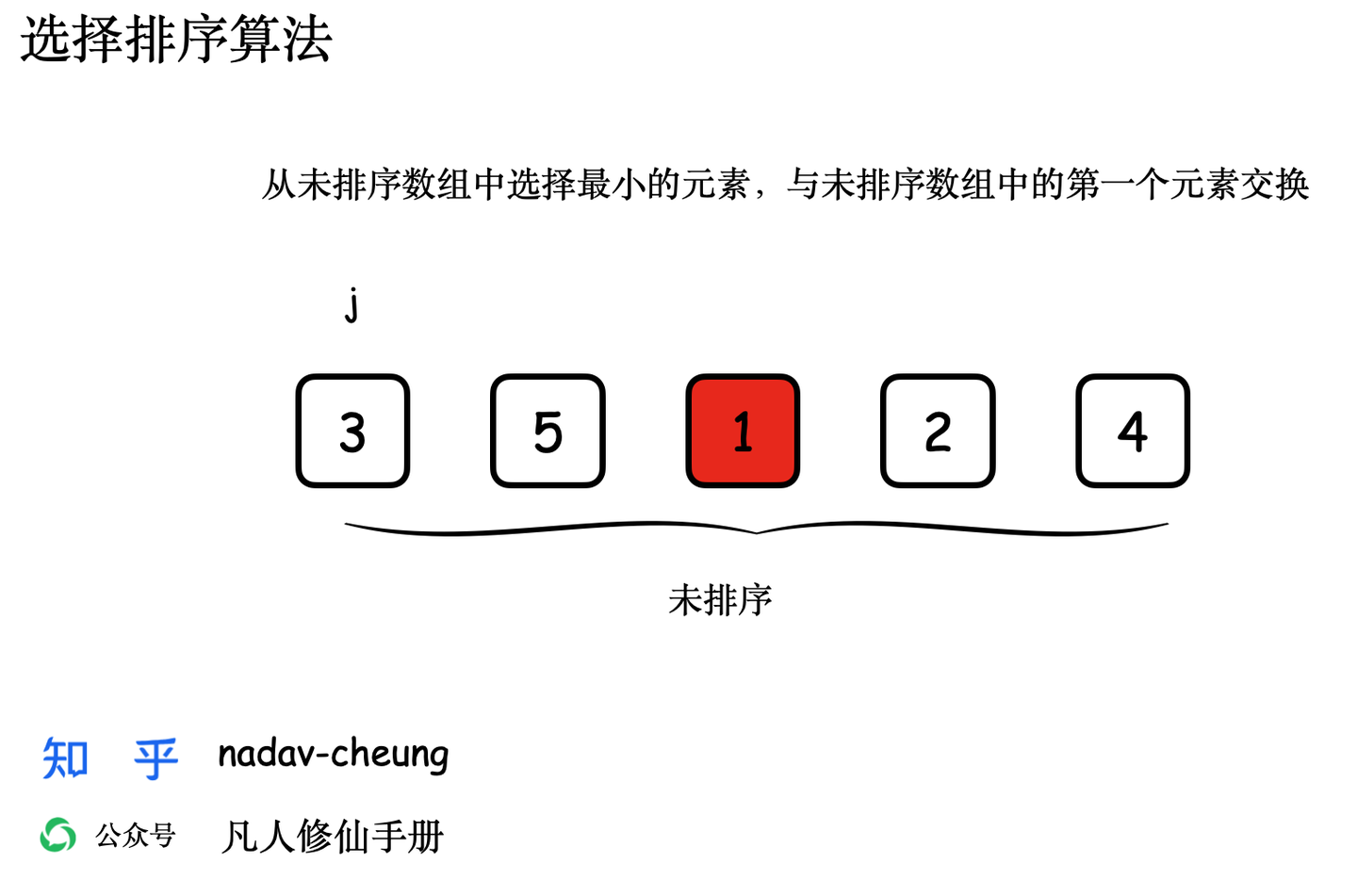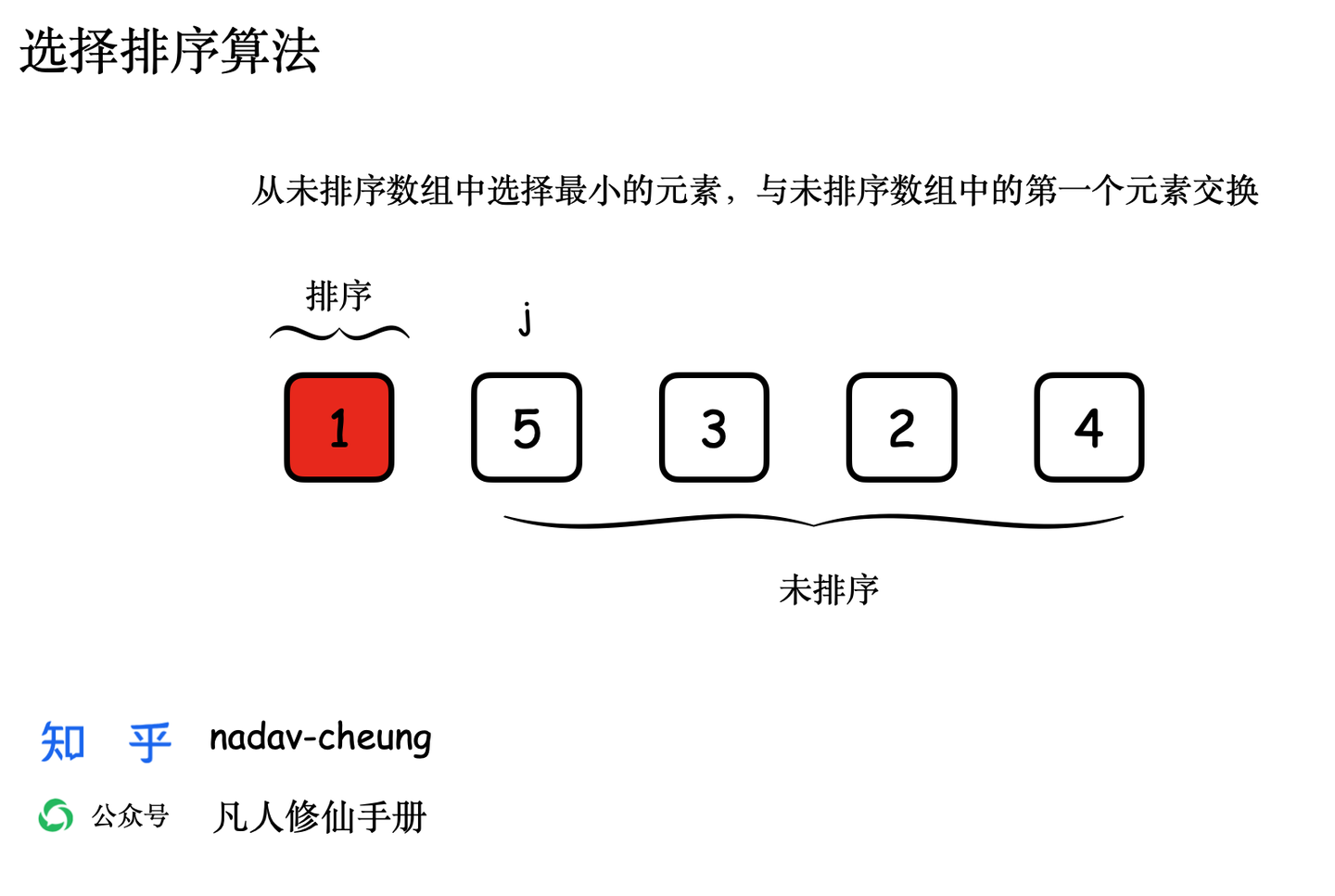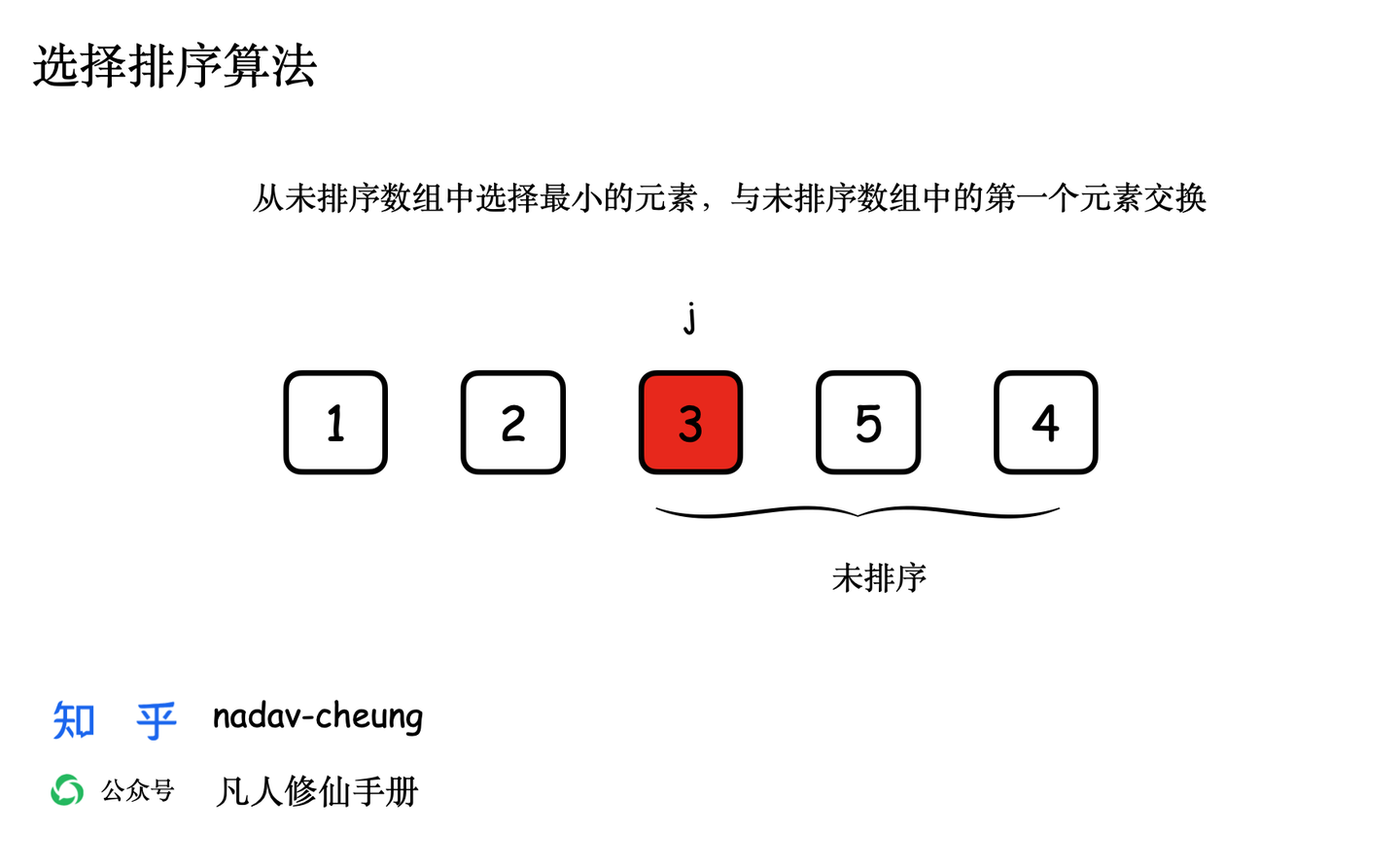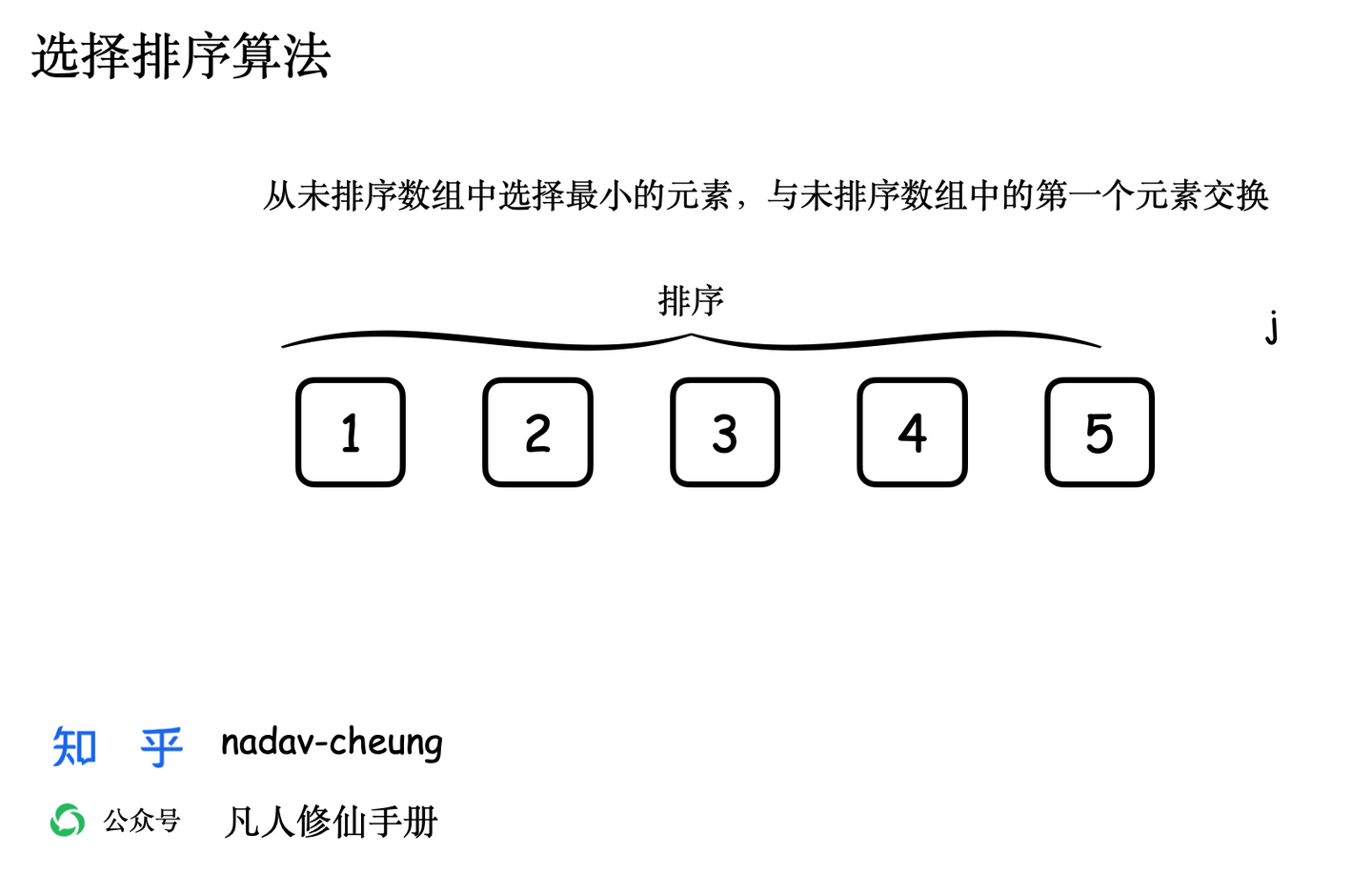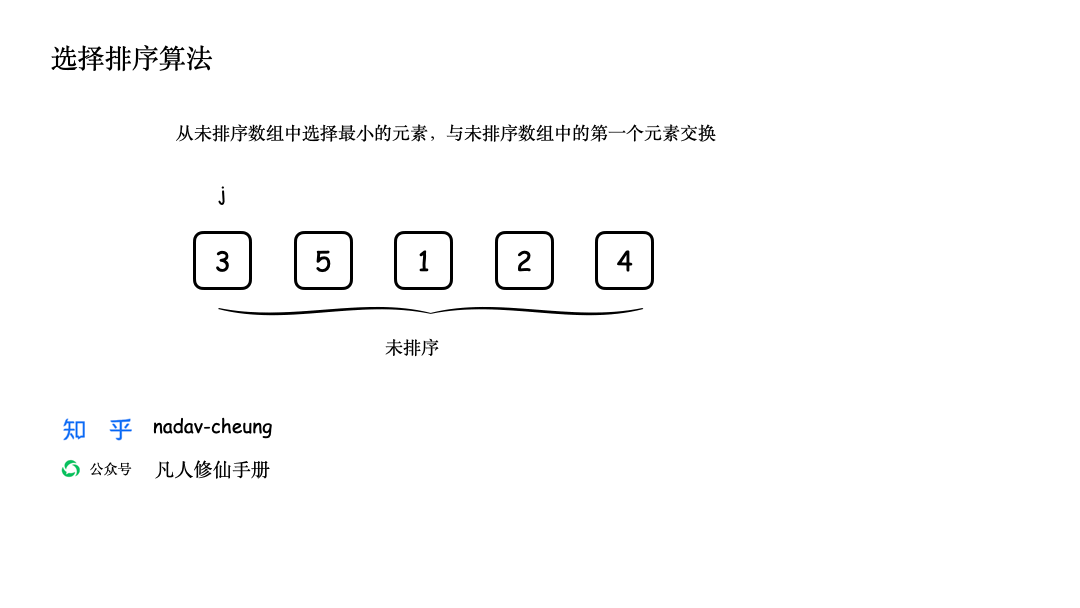《算法与数据结构:选择排序算法》
选择排序算法
简介
选择排序是一种简单直观的排序算法。它的工作原理是每次从待排序的数据元素中选出最小(或最大)的一个元素,存放在序列的起始位置,直到全部待排序的数据元素排完。选择排序是不稳定的排序方法(即相同的元素可能在排序后的序列中有不同的顺序)。
算法原理
选择排序算法的主要步骤如下:
- 在未排序序列中找到最小(或最大)元素,存放到排序序列的起始位置。
- 从剩余未排序元素中继续寻找最小(或最大)元素,然后放到已排序序列的末尾。
- 重复第二步,直到所有元素均排序完毕。
算法演示
假设有一个未排序的数组:[5, 3, 6, 2, 10]
| 步骤 | 当前数组状态 | 选中元素 |
|---|
| 1 | 5, 3, 6, 2, 10 | 2 |
| 2 | 2, 3, 6, 5, 10 | 3 |
| 3 | 2, 3, 6, 5, 10 | 5 |
| 4 | 2, 3, 5, 6, 10 | 6 |
| 5 | 2, 3, 5, 6, 10 | 10 |
图画演示
创建一个演示数组【3,5,1,2,4】,数组长度为 5,数组表示为 nums [0,5) 左闭右开区间。
![图1 选择最小元素1 与未排序队列的第一个元素交换]()
![图2 从剩余未排序队列中寻找最小值与未排序队列中第一元素交换]()
![img]()
![img]()
动画 GIF 演示
![选择排序算法GIF动画]()
Java 代码实现
1
2
3
4
5
6
7
8
9
10
11
12
13
14
15
16
17
18
19
20
21
22
23
24
25
26
27
28
29
30
31
| public class SelectionSort {
public static void selectionSort(int[] nums) {
int len = nums.length;
for (int i = 0; i < len; i++) {
int minIndex = i;
for (int j = i; j < len; j++) {
if (nums[minIndex] > nums[j]) {
minIndex = j;
}
}
swap(nums, i, minIndex);
}
}
private static void swap(int[] nums, int low, int high) {
int temp = nums[low];
nums[low] = nums[high];
nums[high] = temp;
}
}
|
Java 范型实现
1
2
3
4
5
6
7
8
9
10
11
12
13
14
15
16
17
18
19
20
21
22
23
| public class SelectionSort {
public static <E extends Comparable<? super E>> void selectionSort(E[] nums) {
int len = nums.length;
for (int i = 0; i < len; i++) {
int minIndex = i;
for (int j = i; j < len; j++) {
if (nums[minIndex].compareTo(nums[j]) > 0) {
minIndex = j;
}
}
swap(nums, minIndex, i);
}
}
private static <E extends Comparable<? super E>> void swap(E[] nums, int low, int high) {
E temp = nums[low];
nums[low] = nums[high];
nums[high] = temp;
temp = null;
}
}
|

